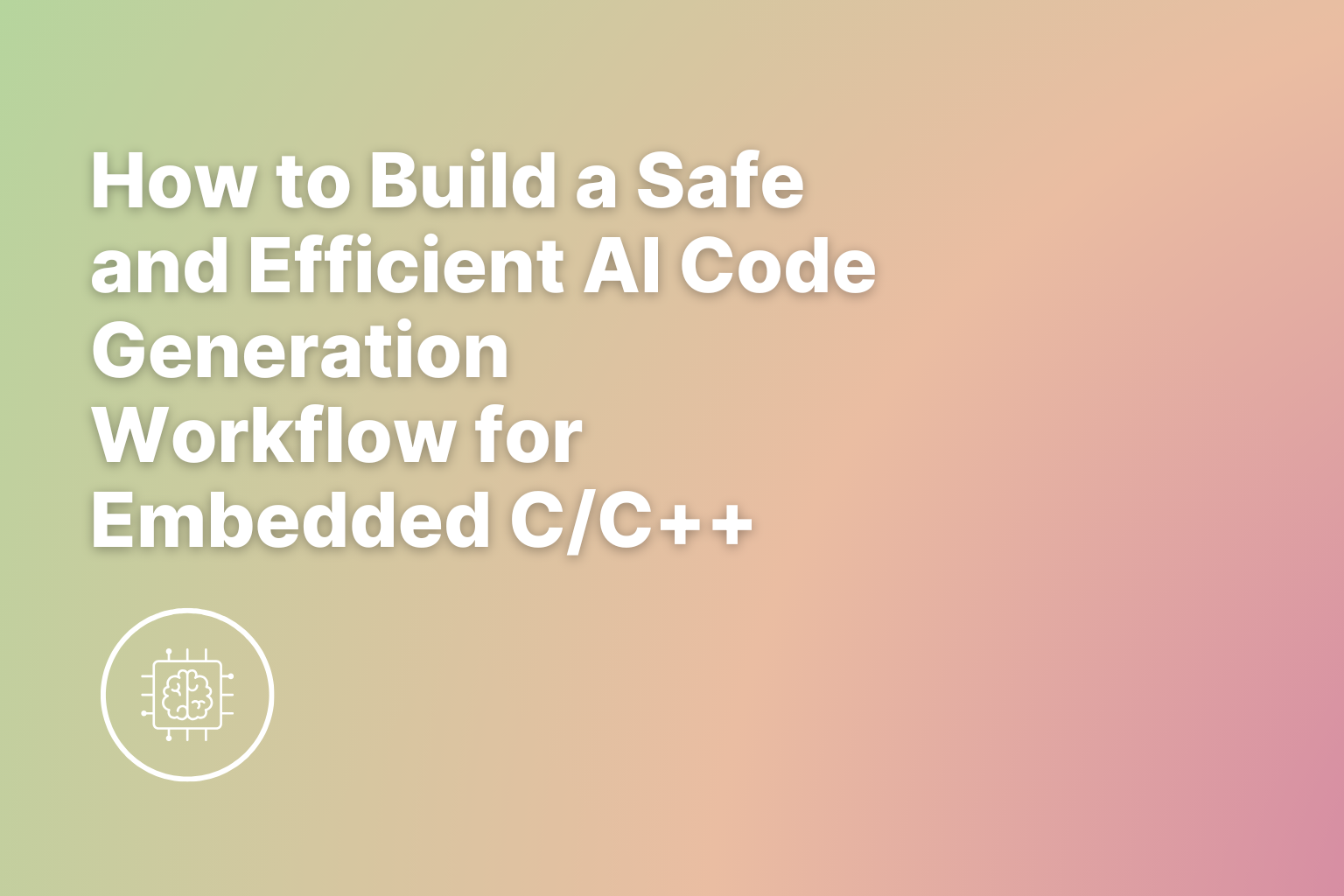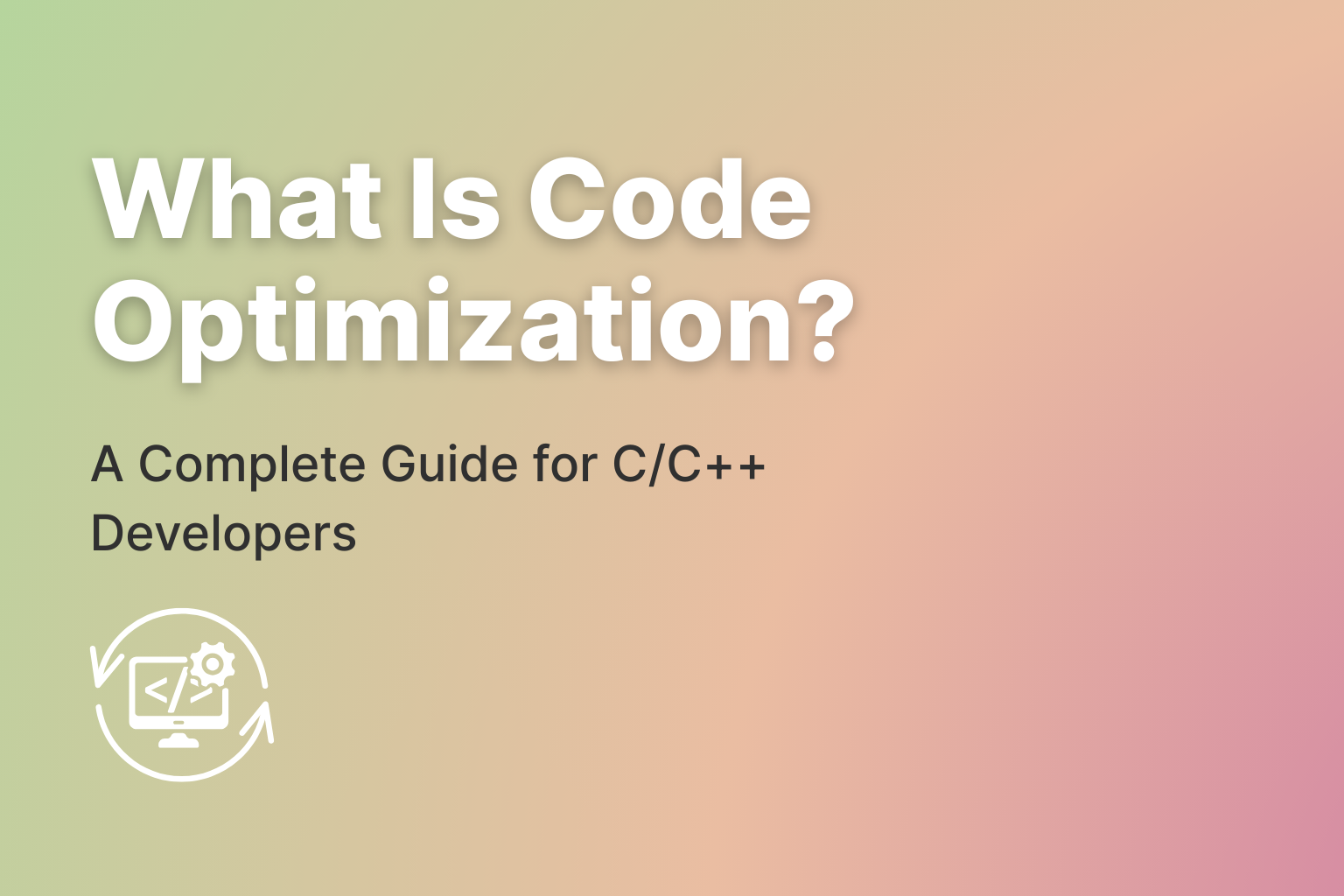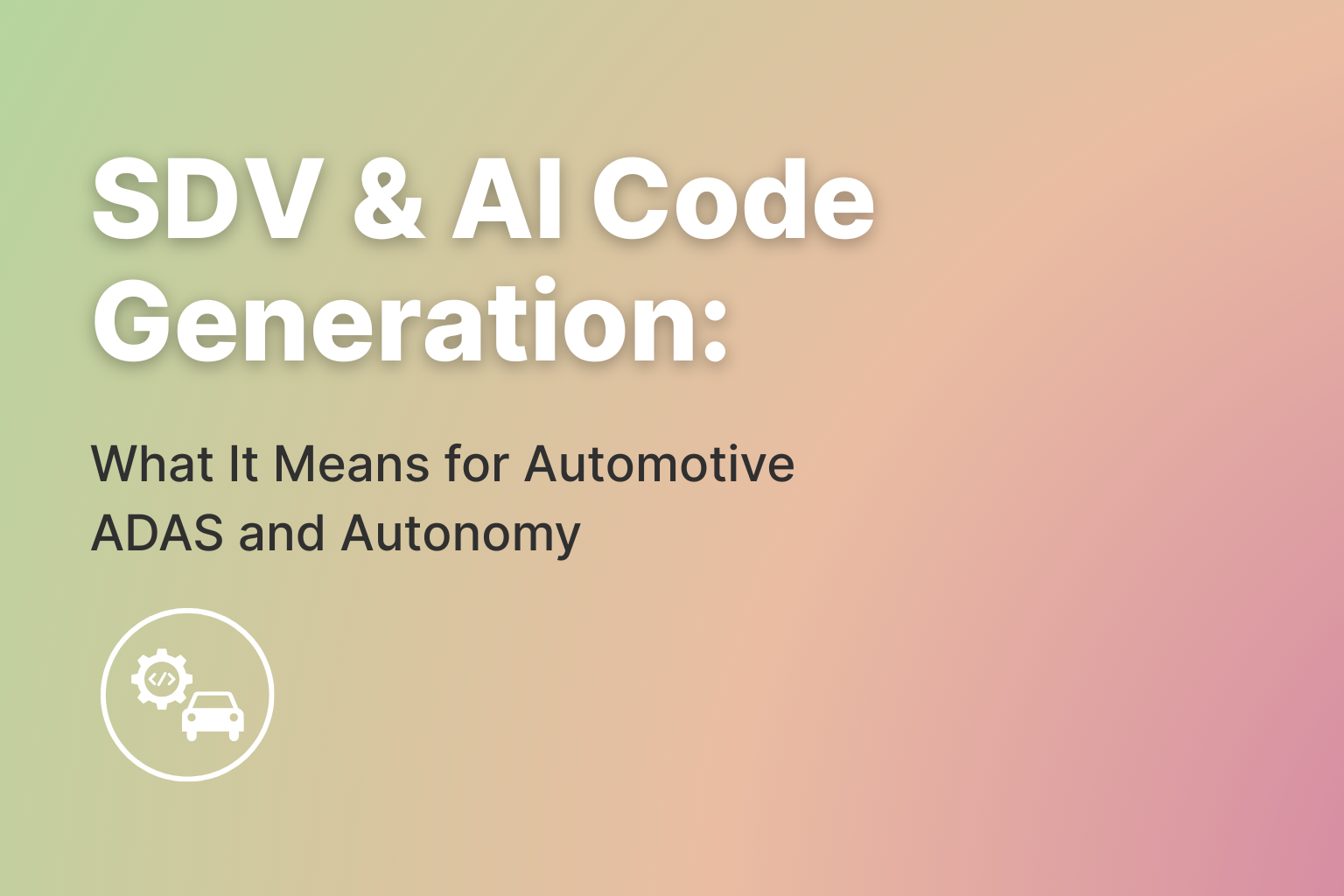AI coding tools are everywhere — from GitHub Copilot to ChatGPT-powered IDEs. But when it comes to embedded software, the question isn’t just “Can AI generate code?” — it’s “Can AI generate performing code?” Let’s break down what’s really happening behind the hype.
1. Context: AI Is Now a Developer’s Everyday Companion
AI-assisted coding tools have gone from novelty to necessity.
According to GitHub’s 2024 developer report, 87% of developers say that AI coding assistants like Copilot help them save mental energy on repetitive tasks. Nearly half of them (47%) use that extra time for design, collaboration, or learning.
Meanwhile, broader surveys show that over 90% of developers now use some form of AI in their professional or personal workflows. Yet, company-level adoption is lagging behind: developers are leading the charge individually, while many organizations are still figuring out governance, policy, and compliance.
Academic research paints a more nuanced picture:
- A longitudinal study found no statistically significant increase in productivity after adopting Copilot — even though developers felt more productive.
- Another usability study across 410 developers revealed that AI tools are mainly used for code completion, syntax recall, or boilerplate — not for handling critical, non-functional requirements.
In short: AI is here to stay — but real-world integration remains a learning curve.
2. The Upside of AI Coding Tools: Faster, Smarter, and More Focused Development
When used right, AI coding tools can significantly improve developer experience. Here’s how:
2.1 Less mental fatigue, fewer repetitive tasks
Developers offload the boring stuff — getters/setters, wrappers, conversions, and boilerplate. GitHub notes that AI “preserves mental effort” for the higher-value parts of the job.
2.2 Measurable productivity gains
For moderate or well-bounded tasks (tests, documentation, small refactors), AI can cut development time by 30–50%, according to recent research on “Transforming Software Development.”
2.3 Faster learning and onboarding
Around 60–71% of developers say AI tools help them learn new languages or understand unfamiliar codebases.
2.4 More time for the hard stuff
When AI handles the “surface code,” developers can focus on what really matters — performance, architecture, hardware interaction, and security.
2.5 Happier, less burned-out teams
Less repetitive work means less cognitive load. In GitHub’s report, 41% of developers said AI helps them prevent burnout.
3. The Flip Side — Especially for Embedded Systems
AI-powered code generation isn’t magic. And in embedded software, it can be risky.
3.1 Quality, performance, and hardware constraints
Most general-purpose AI models don’t understand real hardware constraints — timing, cache, power budgets, or memory layout. The result? Code that compiles fine but runs slow, bloated, or power-hungry.
In embedded systems, you don’t just need working code — you need tight, deterministic, hardware-optimized code. This is where AI often falls short. As WedoLow’s own research points out, “AI can help you draft, but it can’t optimize under real constraints.”
3.2 Hallucinations and logical errors
AI sometimes invents functions, misuses APIs, or introduces subtle logic bugs. In embedded software, such bugs can crash entire systems or cause dangerous behavior.
3.3 Overtrust and loss of vigilance
When developers rely too heavily on AI suggestions, they risk losing attention to timing issues, concurrency, and other critical edge cases.
3.4 Generic context, specific problem
Most LLMs are trained on general open-source data. They don’t “know” your target hardware, linker scripts, or peripheral registers — and that’s a problem when every cycle counts.
3.5 The adoption gap in companies
While nearly all developers are trying AI tools, only 40% of companies officially encourage or standardize their use. This creates governance gaps in version control, security, and review processes.
3.6 Perception vs. reality
A 2025 study by METR found that developers using AI assistants actually took 19% longer to solve problems — even though they believed they were faster.
So yes, AI can help — but it’s not always the shortcut we think it is.
4. Why Embedded Software Needs AI Code Optimization, Not Just Generation
AI-generated code can be a strong starting point — but not a finished product.
In embedded systems, performance and reliability aren’t optional. Every cycle, byte, and microamp matters. That’s why the next evolution isn’t just “AI code generation,” but AI code optimization.
4.1 From code generation to code performance
AI copilots can accelerate development, but they’re still blind to the realities of embedded environments: execution timing, memory footprint, cache behavior, or energy constraints.
The real challenge and opportunity is to make the generated code performance-aware. That’s exactly where new-generation dev tools like the WedoLow MCP Server come into play.
4.2 The missing link between AI and the hardware
Instead of leaving developers to manually inspect, test, and refactor the AI’s output, the WedoLow MCP Server automatically analyzes and optimizes C/C++ code against the real hardware profile.
It measures and adjusts for timing, memory, and power efficiency, transforming “AI-generated code” into code that’s truly ready for the target system.
4.3 Closing the performance gap automatically
When connected to an AI code assistant, the WedoLow MCP Server acts as a performance gatekeeper. It checks the code’s behavior, identifies inefficiencies, and applies verified optimizations, all within your CI/CD pipeline.
This automated loop bridges the gap between fast code generation and high-performance embedded software, reducing the need for costly manual profiling or low-level rewriting.
4.4 From development speed to product efficiency
The outcome is not just faster development — it’s better-performing software. Teams can move quickly with AI tools, knowing that WedoLow ensures the resulting binaries are optimized, stable, and energy-efficient on the target hardware.
4.5 A new kind of workflow for embedded teams
By integrating the WedoLow MCP Server into the toolchain, embedded developers get the best of both worlds:
- The creativity and productivity of AI-assisted code generation
- The precision and reliability of automated, constraint-aware optimization
This hybrid model doesn’t replace engineers — it amplifies their impact, enabling faster innovation without compromising performance or sustainability.
5. The Bottom Line: Hybrid Is the Future
AI coding tools are transforming software development.
They help developers work faster, learn faster, and focus on creativity instead of boilerplate.
But in embedded systems — where microseconds, milliwatts, and bytes matter — generic AI code just isn’t enough.
The future belongs to hybrid workflows:
AI for generation, and specialized tools like the WedoLow MCP Server for optimization and validation.
That’s how teams can keep the speed of AI and the reliability of expert engineering — without sacrificing performance, safety, or efficiency.
Curious how AI-generated code behaves on your target hardware?
Explore WedoLow MCP Server: the first platform that connects AI code generation with real performance optimization – Beta is open.


.svg)





.svg)